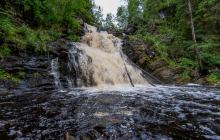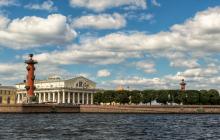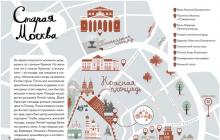KIVACH WATERFALL
Kivach waterfall- a natural pearl of Karelia, the second largest flat waterfall in Europe.
The first mention of the Kivach waterfall dates back to 1566.
The waterfall is one of the most romantic sights of the Republic of Karelia. Many writers have enlightened this amazing natural attraction with various accolades. The name of the stream was derived from the Finnish word "kiivas", literally meaning "swift, strong".
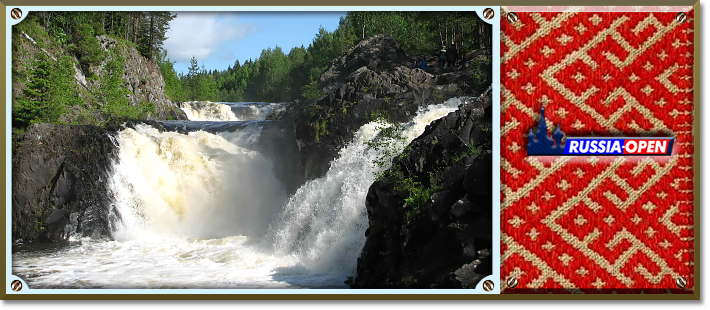
According to philologists, the name Kivach comes either from the Finnish kivi - stone, or from the Karelian kiwas - snow mountain. For a long time, the Kivach waterfall was considered the largest flat waterfall in Russia and the second largest flat waterfall in Europe after the Rhine (Rhine river, Switzerland).
According to an ancient legend, the waterfall was formed with the help of two rivers - Suna and Shuya, which were sisters and flowed next to each other. Once Suna decided to take a break, and gave up her bed to Shuya. Waking up from sleep, she noticed that her sister had flown away quite far, and decided at all costs to catch up with her, destroying everything in her path.
The Kivach waterfall arose in the place where the Suna river broke through the rocks with its rapid current. The two sisters never met, and Suna continues to flow down the river bed alone. The strength of the current can be judged by the hum of the waterfall, which is heard at a distance of five kilometers from the riverbed. The legendary Suna River originates near the border with Finland and flows into Lake Onega. In addition to Kivach, the river has several more turbulent rapids - Por-Porog and Girvas, but Kivach is the most turbulent and impetuous.
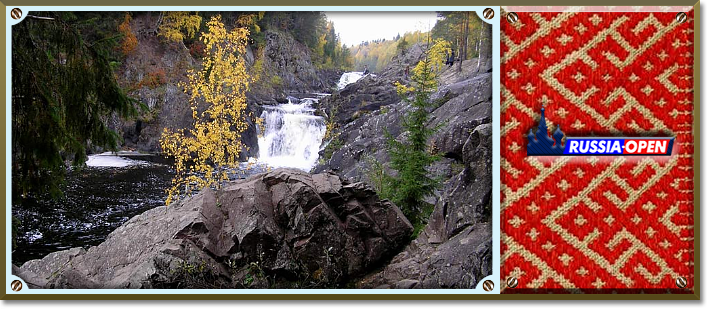
The beauty of Kivach was praised by G. Derzhavin in poetry, and in his essays he mentioned that a visit to the waterfall leaves mixed feelings of pleasure and horror. Many prominent political and cultural figures of tsarist Russia have been to these places, but of the prominent cultural figures of the Soviet Union, only K. Paustovsky has visited here.
On the territory adjacent to the waterfall, there is a nature reserve of the same name, which covers an area of more than 10 thousand hectares. The date of its foundation is 1931. Scientific research is constantly being carried out on the territory of the reserve, the flora and fauna of these unique places are being actively studied. The reserve also houses an arboretum and a Wildlife Museum.
HOW TO GET TO KIVACH WATERFALL
This can only be done along one road. The convenient Kolla highway (St. Petersburg - Murmansk) passes by the capital of the Republic of Karelia - the city of Petrozavodsk, after the recent reconstruction you no longer need to enter the city. If you continue straight for 60 km towards Murmansk, you will reach the city of Kondopoga. After passing it, you will have to overcome 21 km to the sign to the Kivach waterfall, which is located in front of the village of Sopokha, on the 493rd kilometer of the Kola highway (if you passed the Sopokha sign, then you missed the sign to the waterfall). Turning left to Kivach, you will enjoy driving along a narrow asphalt path through a beautiful mixed forest.
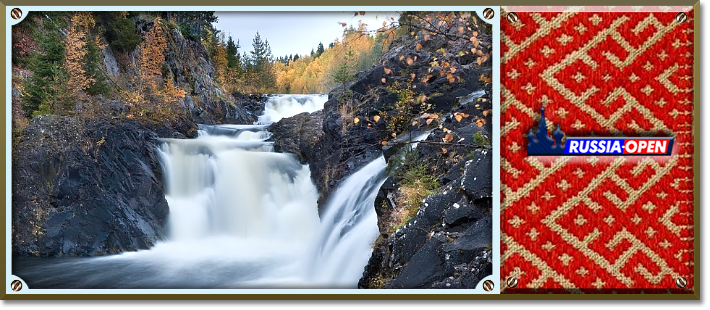
You can approach the waterfall only from one side - the east. There is no bridge to the other side, so watching the waterfall is like walking over the rocks on one side. Despite the large number of signs prohibiting approaching the very edge of the rocks, this can be done. It is also possible to wade to the other side, but it’s better not, because the stones are slippery, and it’s better to fall into a waterfall in a movie than in real life. Most of the tourists who come here stay for a short time, just to take photos. At the same time, it can be crowded at the waterfall, and it is difficult to predict the number of visitors in advance.
These are mainly bus excursions and passing cars, since the M18 highway (Petersburg - Murmansk) is 5 kilometers away. In addition to the waterfall, the natural museum and the dendrocollection are of interest. Souvenir shops with wooden crafts can also be opened. Their assortment is typical for the whole Karelia as a whole. These are products made of birch or birch bark, such as boxes, beads, etc., up to chairs made of solid birch root. Prices are a little overpriced, but within reason. Very similar souvenirs can be bought in Petrozavodsk (at the pier), Belomorsk, Murmansk (railway station), etc. with the symbols of the respective places. You can spend a lot of time in the reserve enjoying nature. If you stopped by not only to check in at the waterfall, then you can sit and admire the large stream of falling water for a long time. You can also alternate the observation of the waterfall with the inspection of other attractions of the reserve.
WATERFALL WHITE BRIDGES
The waterfall "White Bridges" is also called the waterfall "Yukankoski" - it is one of the highest waterfalls in Karelia. Yukankoski is much higher than the Kivach waterfall - 17.4 meters, against 10.7 meters, but it is visited by tourists and local residents much less often.
Waterfall White bridges (Yukanokoski) is the highest in South Karelia. The height of the waterfall is almost 20 m. For comparison: the height of the Kivach waterfall, which is visited by thousands of tourists every year, is only 11 m, but White Bridges cannot boast of the same fullness. Nevertheless, the picturesque area and beautiful landscapes make it quite an interesting tourist attraction.
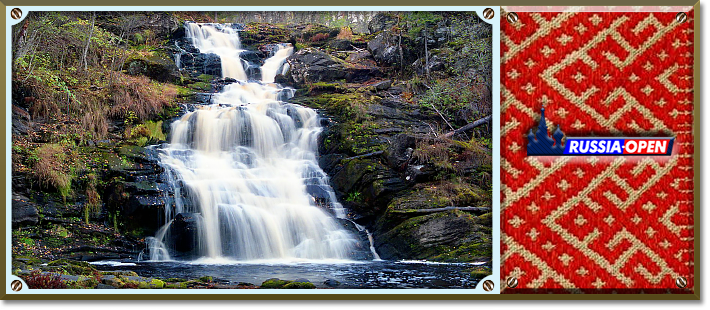
It is believed that the name "White Bridges" was given to this waterfall by the Finns, who built a road here and erected bridges across the Kulismajoki River directly in front of the waterfall. And they were called white because they were built of white stone. At the moment, faint ruins remain of the bridges, which merge with the many stones scattered around the area.
The other name of the waterfall - "Yukankoski" has a purely Karelian origin. In translation it means "Yucca threshold". On the Kulismayoki River, there was formerly the Yukankontu farm, which translates as Yukku Manor, after which the threshold was named.
The appearance of the waterfall changes depending on the season. During spring floods, the White Bridges are a noisy stream of water that falls from a high threshold into a large bowl at the foot of the threshold. The water at this time takes on a yellowish tint due to peat washed out by the flow of water.
As summer approaches, the water becomes more and more transparent, and in July crystal clear streams fall from the stone step. In the autumn months, the waterfall gains strength again, and becomes almost as deep as in spring. This does not last long, since with the first frosts the river and the waterfall are gradually frozen by ice. In severe winters, the waterfall freezes almost completely, turning into a large block of ice, inside which a thin stream of water flows.
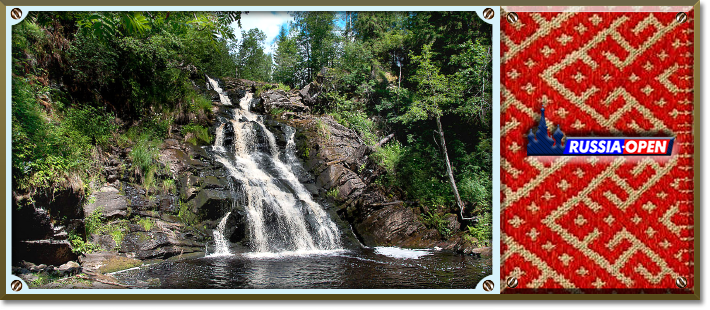
By the way, guests of the republic are attracted not only by the waterfall itself, but also by its picturesque surroundings. The White Bridges are located on the Kulismajoki River, which flows along a wooded riverbed. The left bank of the river is covered with a spruce forest and looks especially beautiful, and in general there is a lot of "work" for tourists with cameras. Near the waterfall (next to the descent into a small gorge) there is a large clearing, which is great for setting up a tent camp or for ordinary outdoor recreation. In summer, the meadow is covered with dense grass.
There is another waterfall near the White Bridges. Guides often call it "White Bridges 2", and it is formed by a channel through which part of the river water flows around a small island near the main rapids. This waterfall differs from its "older brother" in its small size and the fact that in the hot months of summer it almost completely dries up. At the same time, during the spring floods, it becomes almost as powerful and noisy as the White Bridges.
There is not a single settlement within a radius of several tens of kilometers from the White Bridges. Forests, lumberjacks, hunters and tourists can most often be found near the waterfall. The latter come to admire the view of the White Bridges both independently and as part of small groups. Karelian travel agencies do not yet offer excursions to this natural attraction, but if they wish, guests of Karelia will always be able to find a way to get to the waterfall.
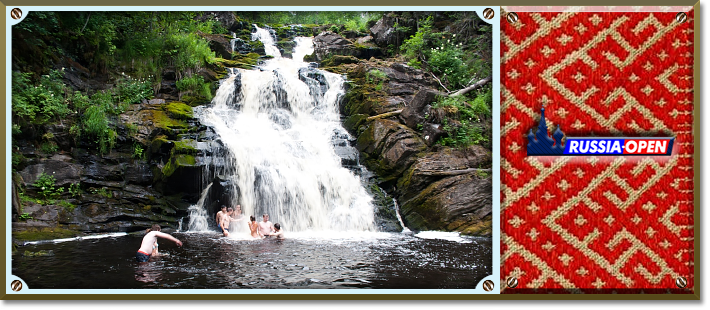
Even before visiting the White Bridges, tourists should understand that in these places the presence of a person is almost not felt, which has a positive effect on the population of wild animals. Travelers should prepare for a possible meeting with wolves, bears and other not very friendly inhabitants of the Karelian forests, but "be afraid of wolves - do not go to the forest!"
HOW TO GET TO WHITE BRIDGES?
Getting to the White Bridges is not so easy, but quite real, and visiting this waterfall is undoubtedly a worthwhile event.
The waterfall is located approximately 30 kilometers from Pitkyaranta. There are several paths to this waterfall.
There are three ways to get to the turn to the road leading to the waterfall: from Sortavala, Pitkyaranta or Pryazha. In any case, you need to turn towards Lake Ruokojärvi. The turn to the lake is the next turn to the right after the road to Suojärvi if you are coming from Pryazha, or the next turn to the left after the sign to the Pitkärantu road to the right. The turn is quite remarkable, at the very intersection with the Sortavala - Petrozavodsk highway there is a small area for car repair and inspection. The road is unpaved and leaves at a slight angle to the left of the main highway.
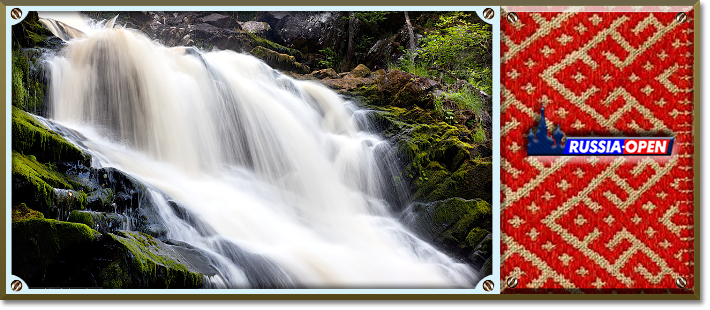
Next, you need to move straight along the dirt road, not paying attention to the forks, in particular on the wide road going to the left. On the left in the direction of travel, you will see a lake, which means you are on the right track. Further, going out into the field, the sandy road will go up the hill, keep to the right. Gradually the road will take to the right, here it is very important not to miss the turn to the left. At the bend itself there is an inconspicuous sign to the waterfall. If you did everything correctly, noticeable blue plaques with the words "White Bridges" will soon appear on the trees. Then everything depends on the capabilities of your car and your desire. You can leave the car 2 - 2.5 kilometers from the waterfall and walk through the picturesque forest.

